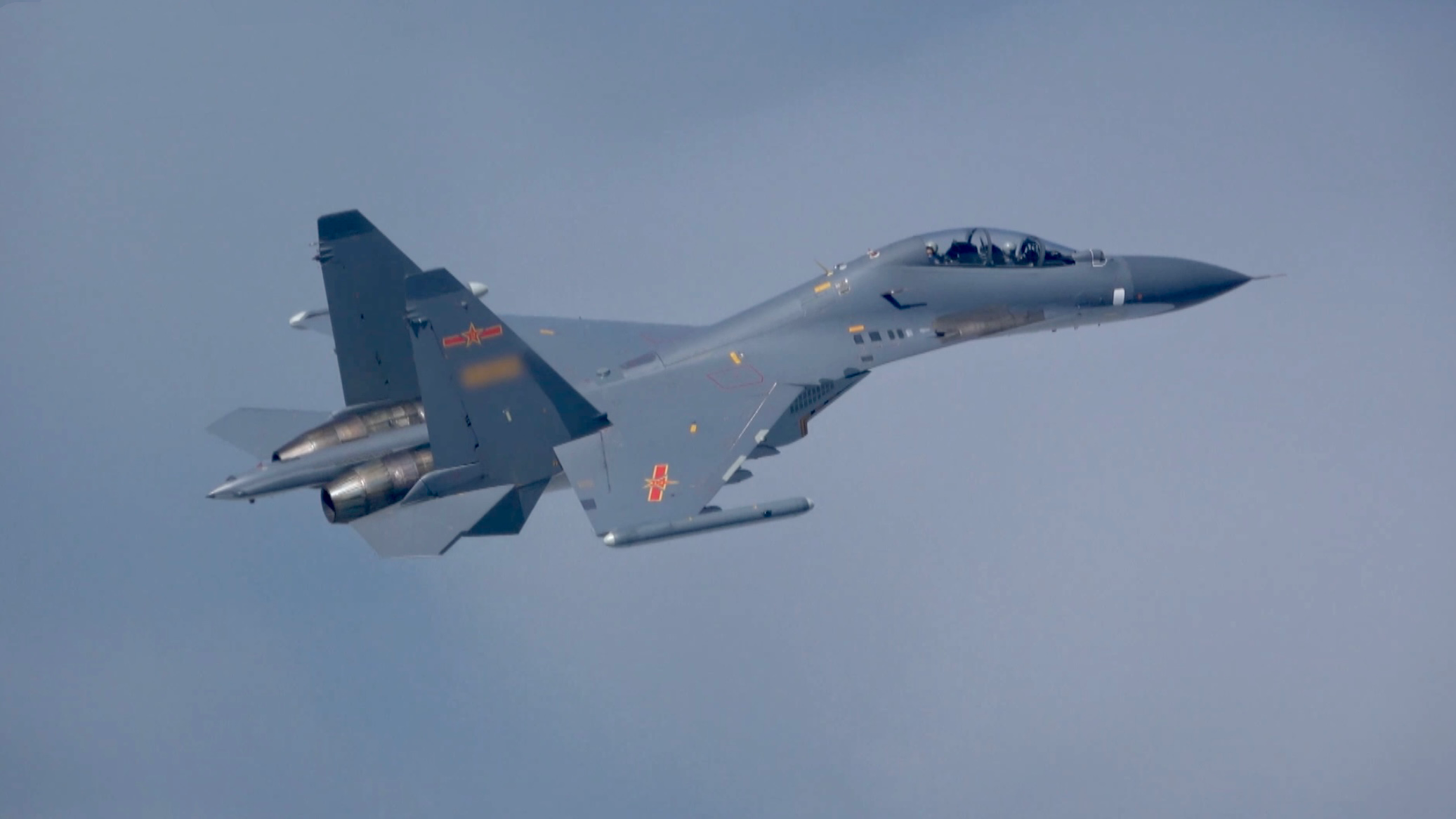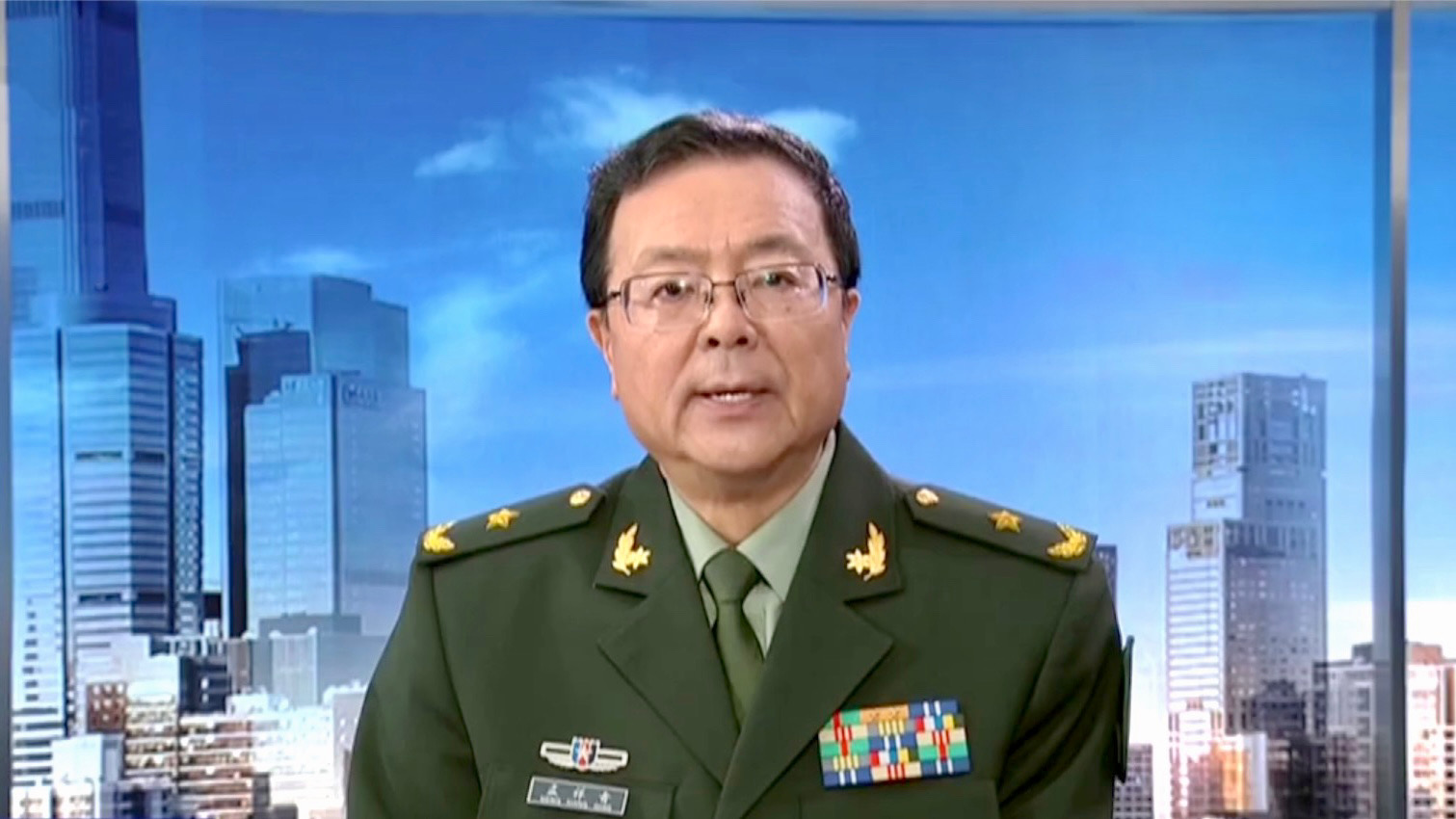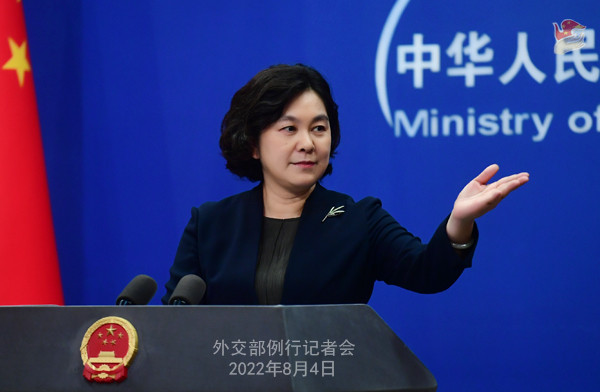05:02

China's military drills continued as scheduled on Sunday in the waters and airspace around the Taiwan Island, with a focus on testing the capabilities of using joint fires to strike land targets and striking long-range air targets.
The air force under the Eastern Theater Command of the Chinese People's Liberation Army (PLA) deployed multiple types of warplanes, including early warning aircraft, bombers, jamming aircraft, fighter-bombers and fighter jets, to conduct drills on such combat missions as joint reconnaissance, airspace control operation, strikes on ground targets, and air support and cover.
Supported by naval and air combat systems, the air strike forces, together with long-range multiple launch rocket systems and conventional missile troops, conducted drills of joint precision strikes on targets.
Multiple bomber formations flew across the Taiwan Straits from north to south and from south to north, while several fighter jets conducted joint drills with destroyers and frigates.
The operation has tested the tactics of systems warfare under information-based conditions, and honed and improved the capabilities to destroy crucial island targets with precision strikes, said Zhang Zhi, an air force officer of the PLA Eastern Theater Command.
Why are the military drills necessary?
China has announced a series of countermeasures, including live-fire military exercises in the waters and airspace around the Taiwan Island, from August 4 to 7, after a provocative visit by U.S. House of Representatives Speaker Nancy Pelosi to the country's Taiwan region.
Chinese State Councilor and Foreign Minister Wang Yi dismissed Pelosi's visit as a "complete farce" and said that the U.S. is violating China's sovereignty under the guise of "democracy."
"Despite China's repeated and serious warnings in advance, the U.S. has had House Speaker Nancy Pelosi visit Taiwan. This has seriously undermined peace and stability across the Taiwan Straits and China-U.S. relations," read a statement released by the Chinese Embassy to the U.S., stressing that Washington should bear responsibility for the current situation.
When meeting with the officials of the White House, Ambassador Qin Gang stressed that countermeasures taken by the PLA are "necessary and legitimate" to deter "Taiwan independence" separatist forces, and safeguard national sovereignty and territorial integrity.
Countries and organizations including Russia, the DPRK and Venezuala have publicly voiced their support of Beijing in the wake of the trip and held onto the one-China principle. UN Secretary-General Antonio Guterres reiterated support for the United Nations General Assembly (UNGA) Resolution 2758 of 1971 and the one-China principle.
Unprecedented drills
Experts shared insights and analysis on the drill and the significance behind it.
Zhang Junshe, a senior research fellow at the Naval Research Academy of the PLA, explained in an interview on Friday the importance of the six areas around the island selected for the drill.
The exercise area located in the southeast of Pingtan Island is the narrowest point on either side of the Taiwan Straits, that breaks the so-called "median line" that China has never recognized.
Two exercise areas to the north of Taiwan Island can directly block Keelung Port. The exercise area to the east of Taiwan Island directly targets the military bases in Hualien and Taitung, forming a frontal strike posture. The exercise area to the southeast of Kenting can effectively control the entrance and exit to the Bashi Channel.
The exercise area to the southwest of the island is close to Kaohsiung, and can enclose and control the military bases in Kaohsiung. More importantly, it can enable the six exercise areas to blockade Taiwan Island.
Read more: Why the PLA's six drill areas around Taiwan matter
01:09

"Altogether, the six areas form something of a noose. When the knot tightens, it's like containing separatist forces on the island. So this drill should work very well," said Meng Xiangqing, professor at the National Defense University of the PLA.
Meng also talked about the significance of the drill, "This is the first time ever that the PLA has organized such large-scale and multi-regional drills around Taiwan Island."
Read more:
Here are the 10 breakthroughs in China's 2022 Taiwan military drill
Multiple firsts of the PLA's military drills surrounding Taiwan island

Chinese Foreign Ministry spokesperson Hua Chunying speaks at a press conference in Beijing, August 4, 2022. /MOFA
Chinese Foreign Ministry spokesperson Hua Chunying speaks at a press conference in Beijing, August 4, 2022. /MOFA
Will the military drills be a new normal?
Asked about whether the military exercises would become a new normal in the Taiwan region, Chinese Foreign Ministry spokesperson Hua Chunying said "it hinges on the action of the U.S. side and the 'Taiwan independence' separatist forces."
Hua reiterated the real status quo of the Taiwan Straits – the two sides of the Taiwan Straits belong to one and the same China, stressing that China's sovereignty and territorial integrity have never been split.
"Unless they stop trying to split China, China will never stop taking resolute actions to safeguard our sovereignty and territorial integrity, not even for a day. And we will not stop demonstrating our resolve, will and capability," Hua made the remarks at press conference on August 4.
(With input from Xinhua)

